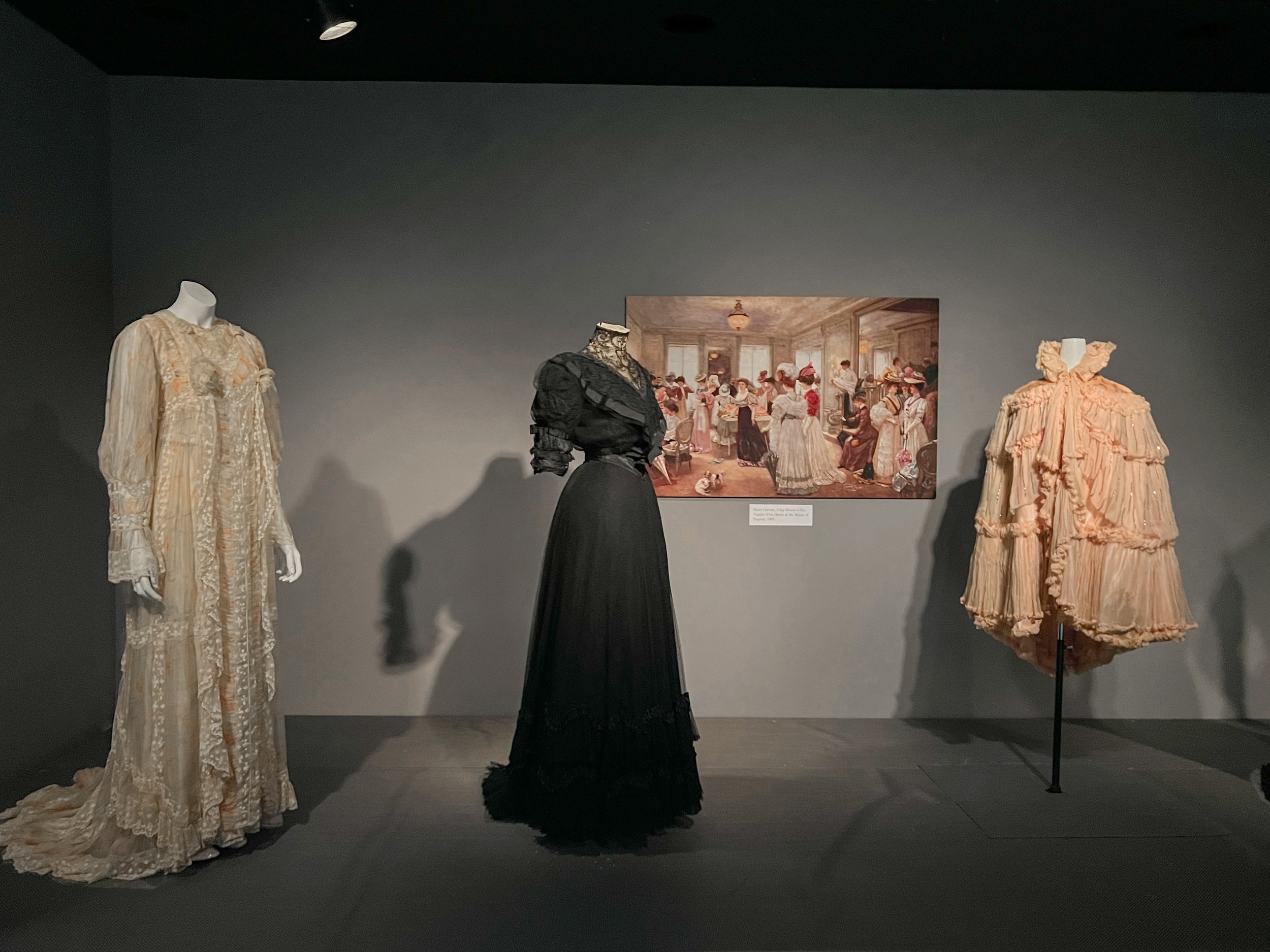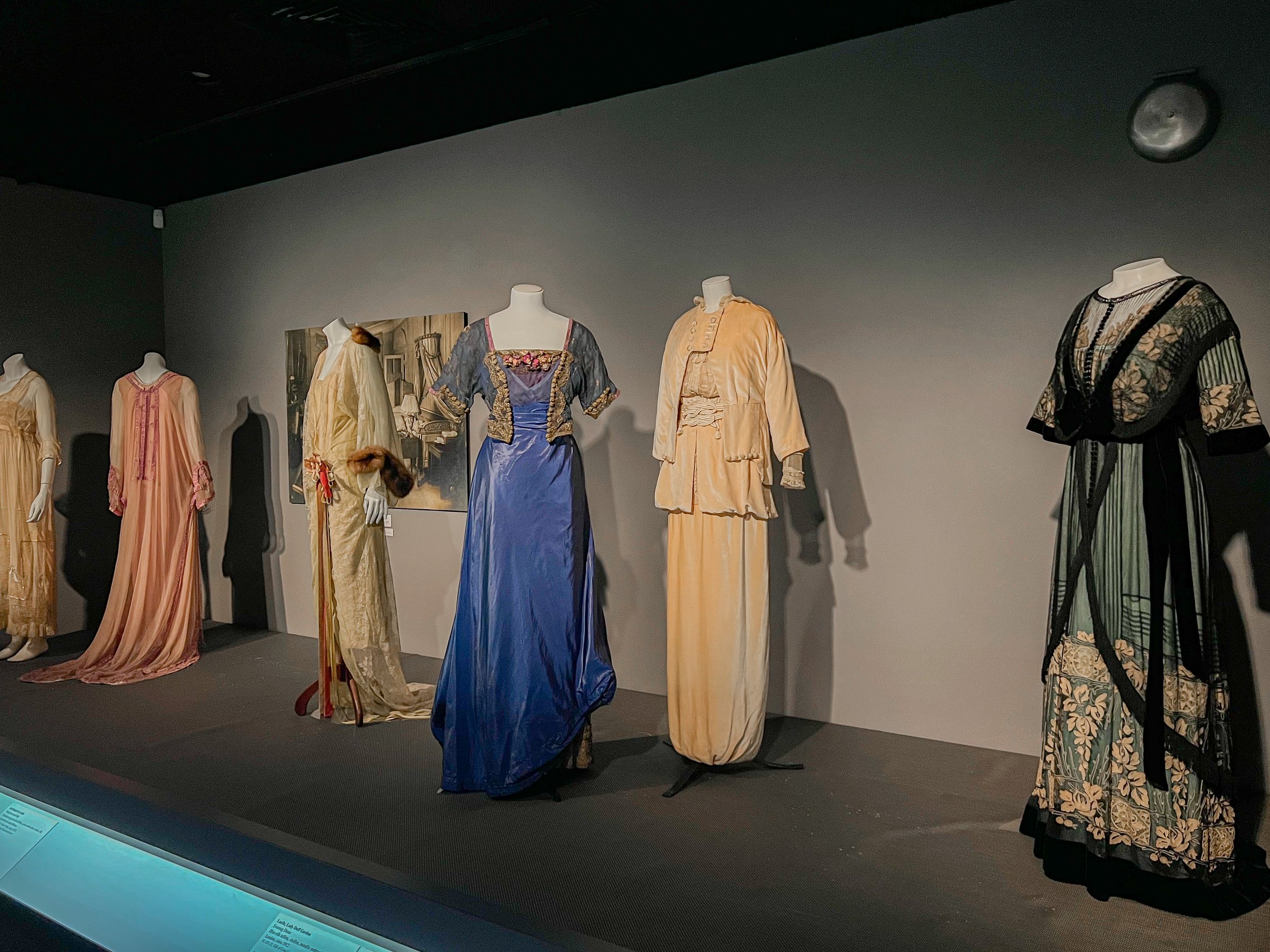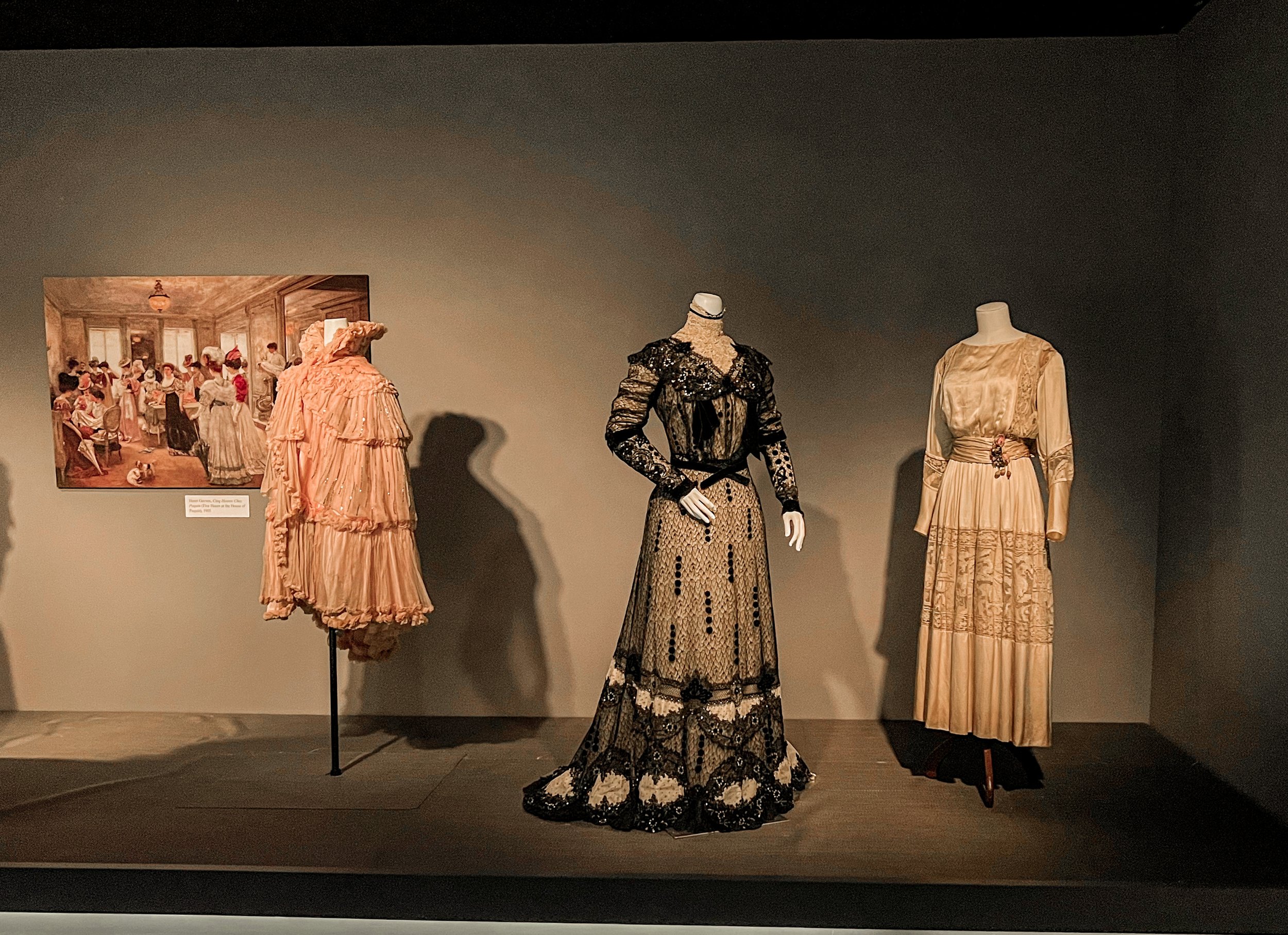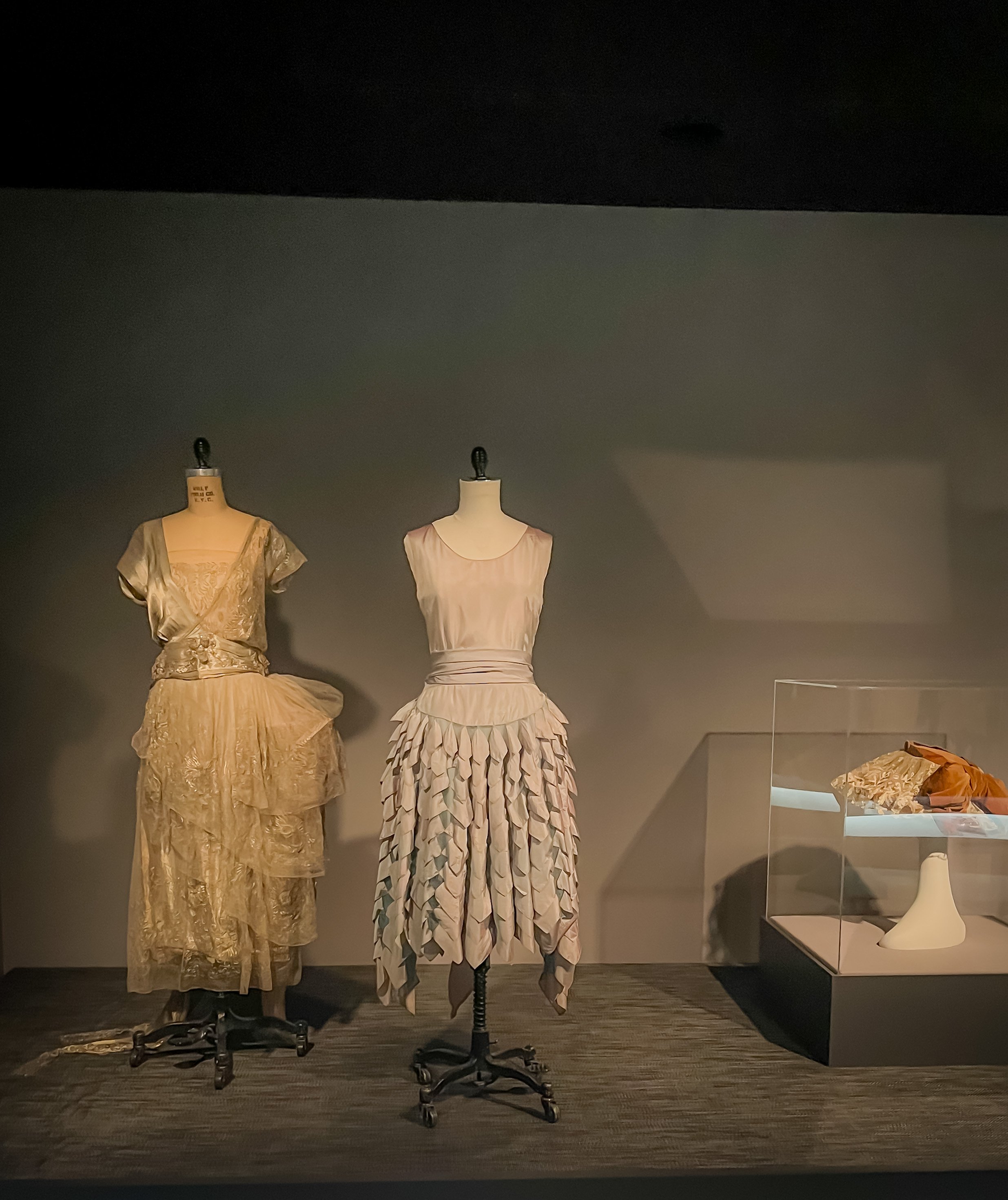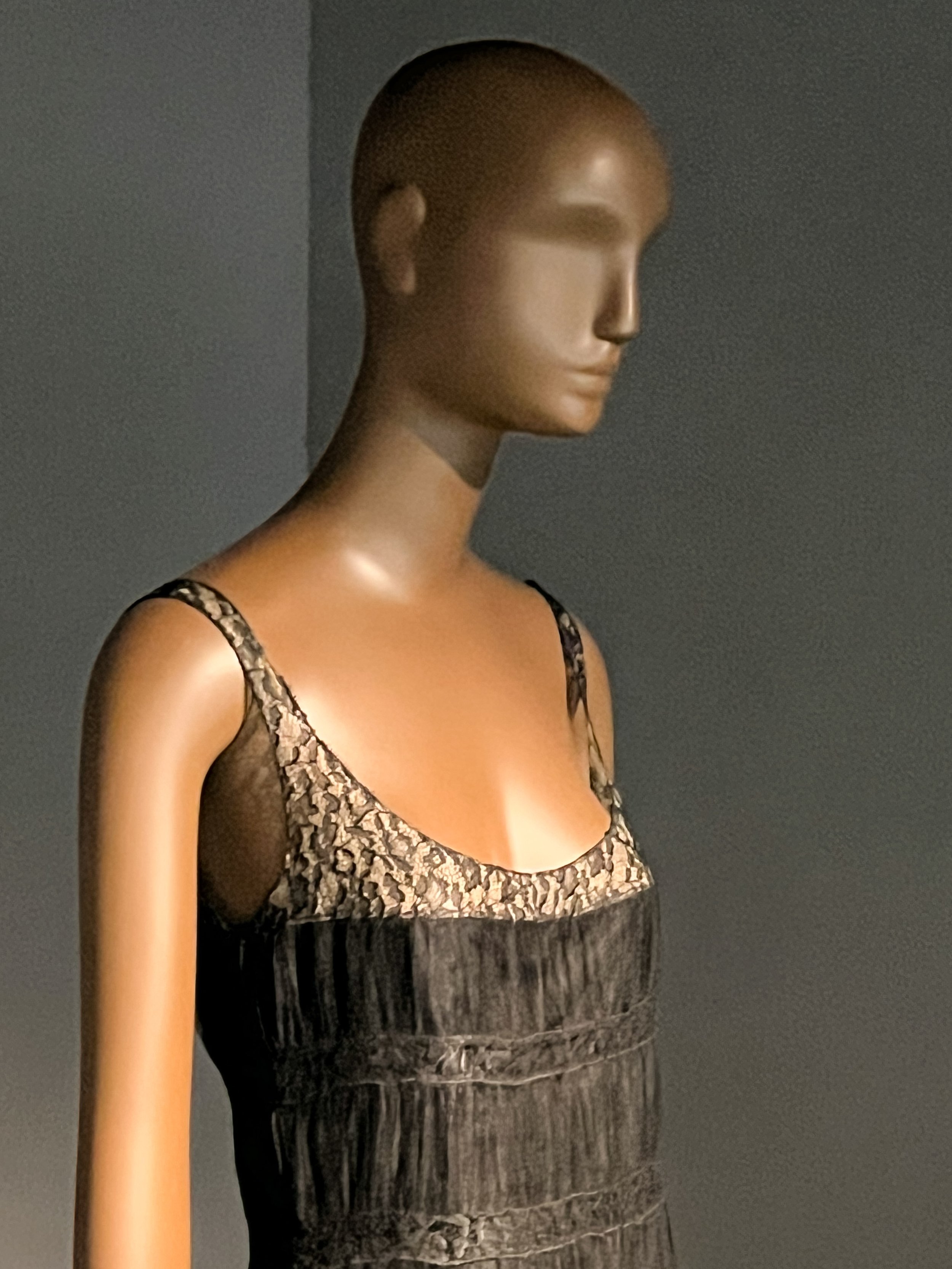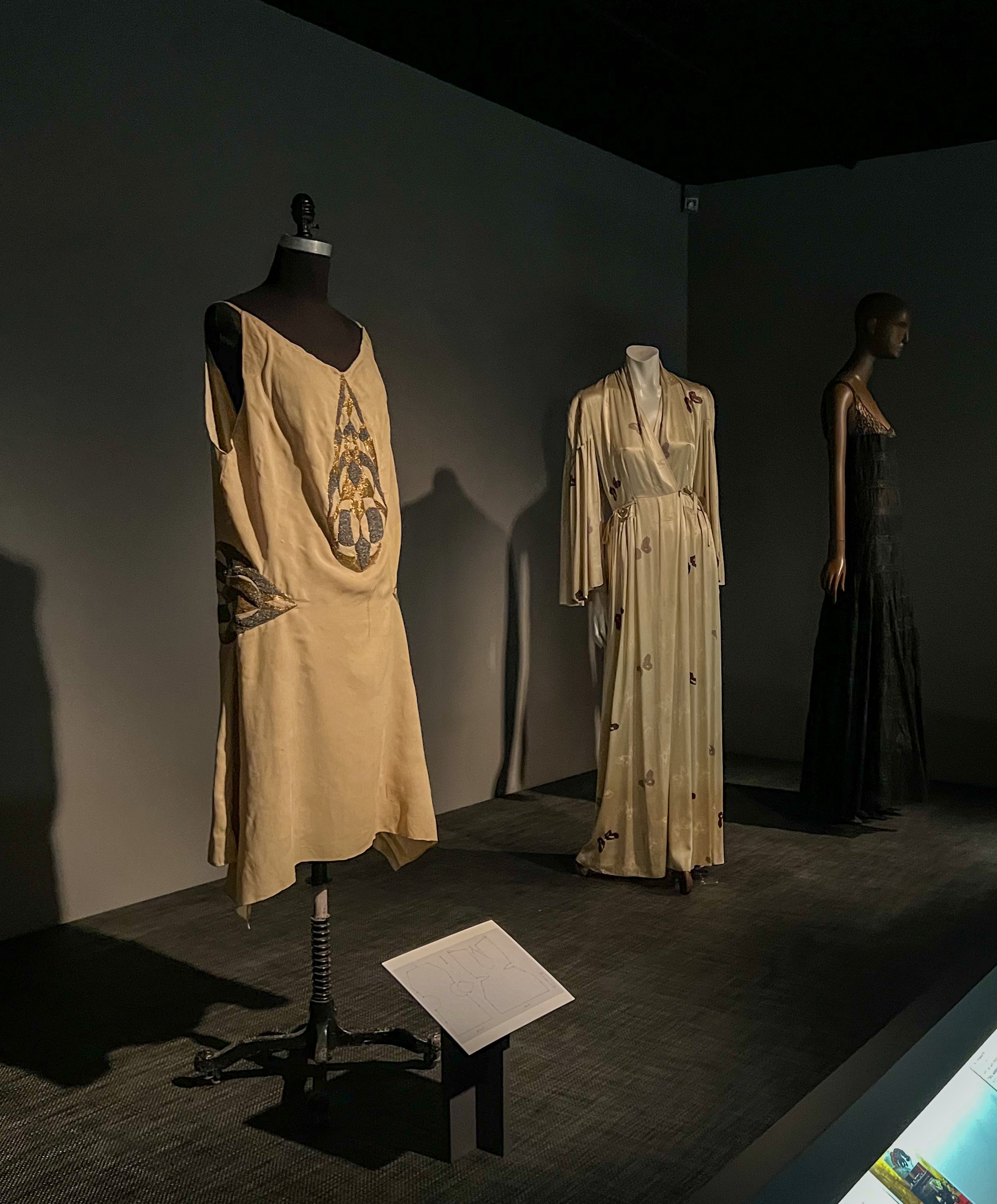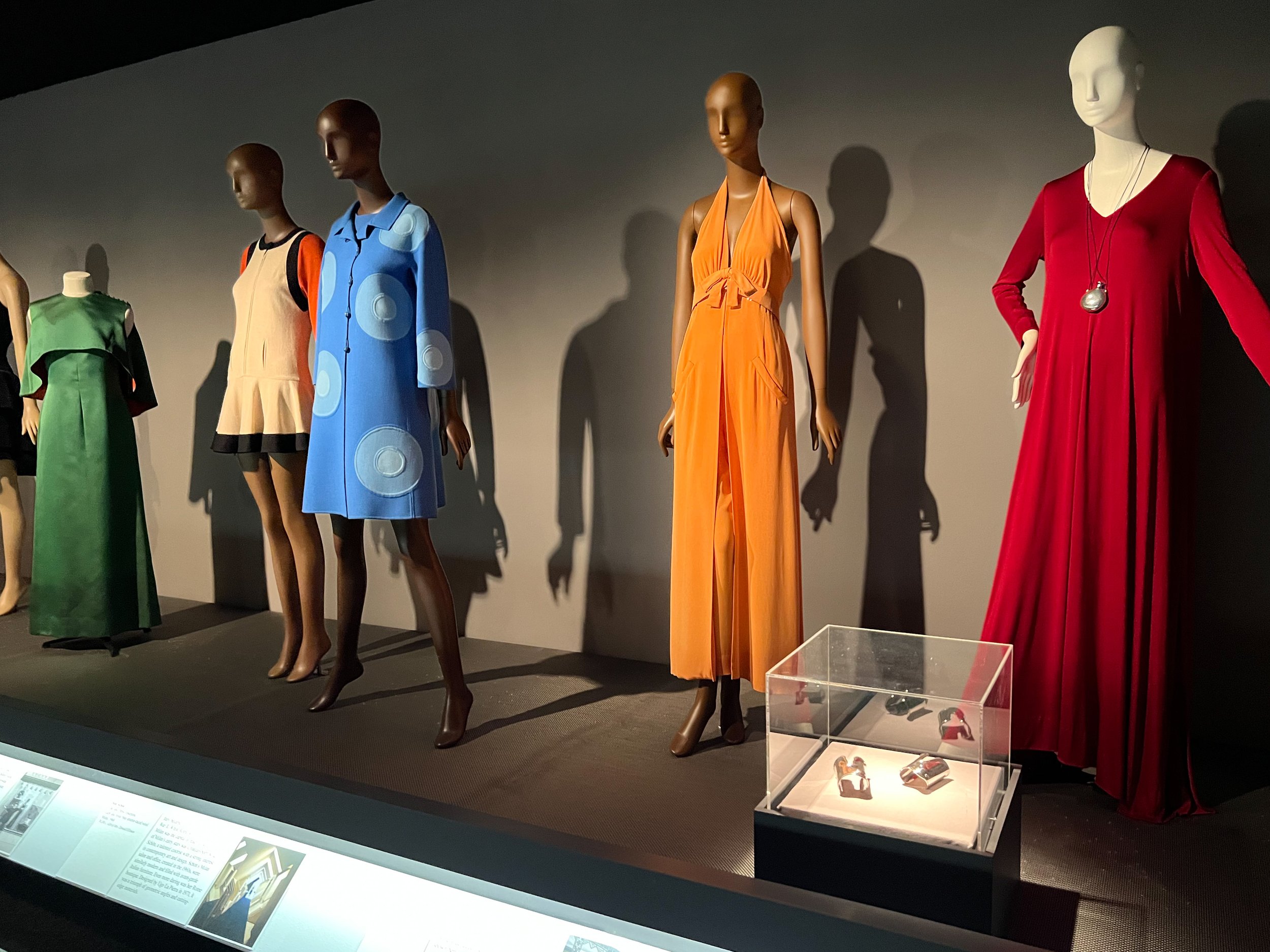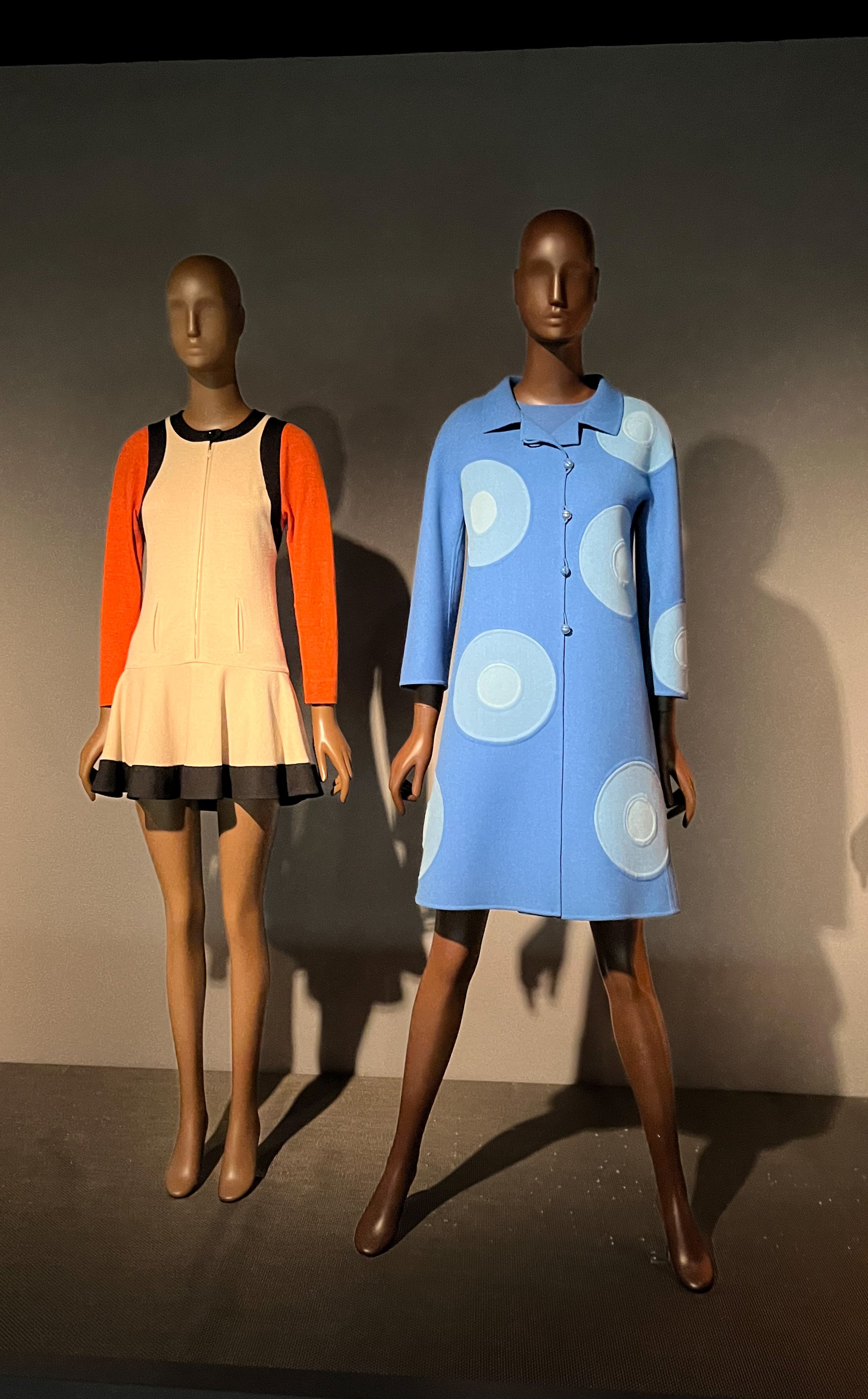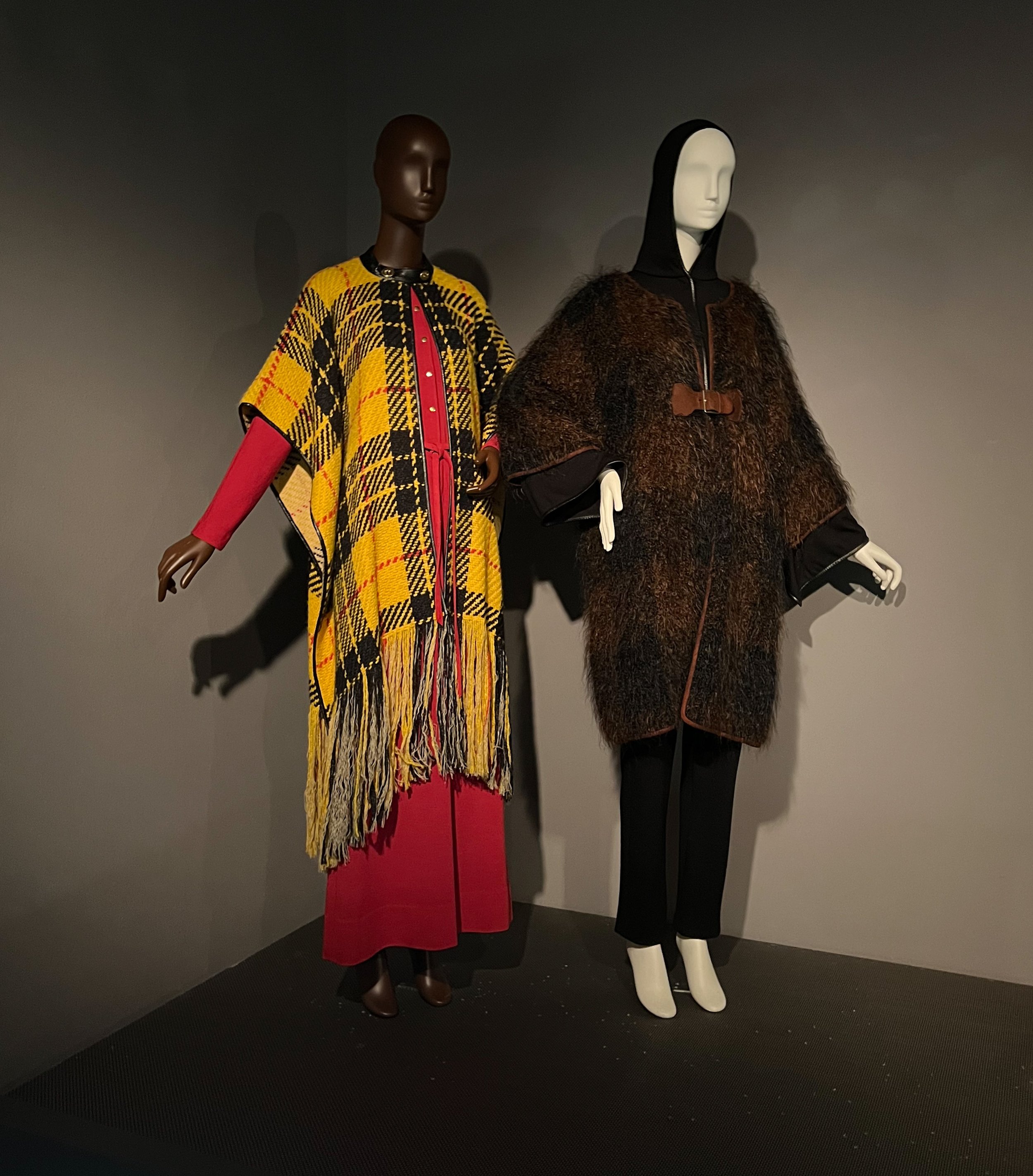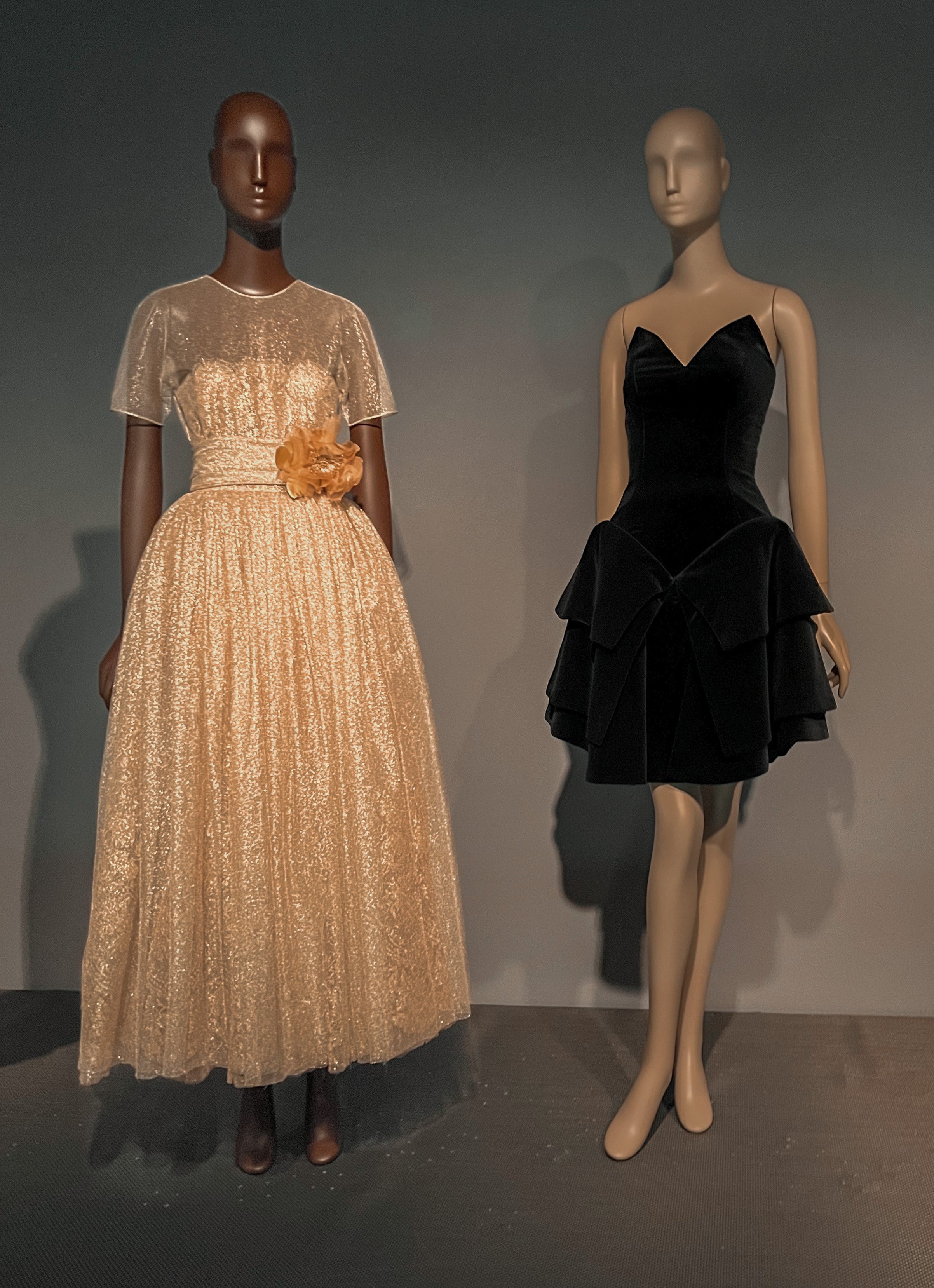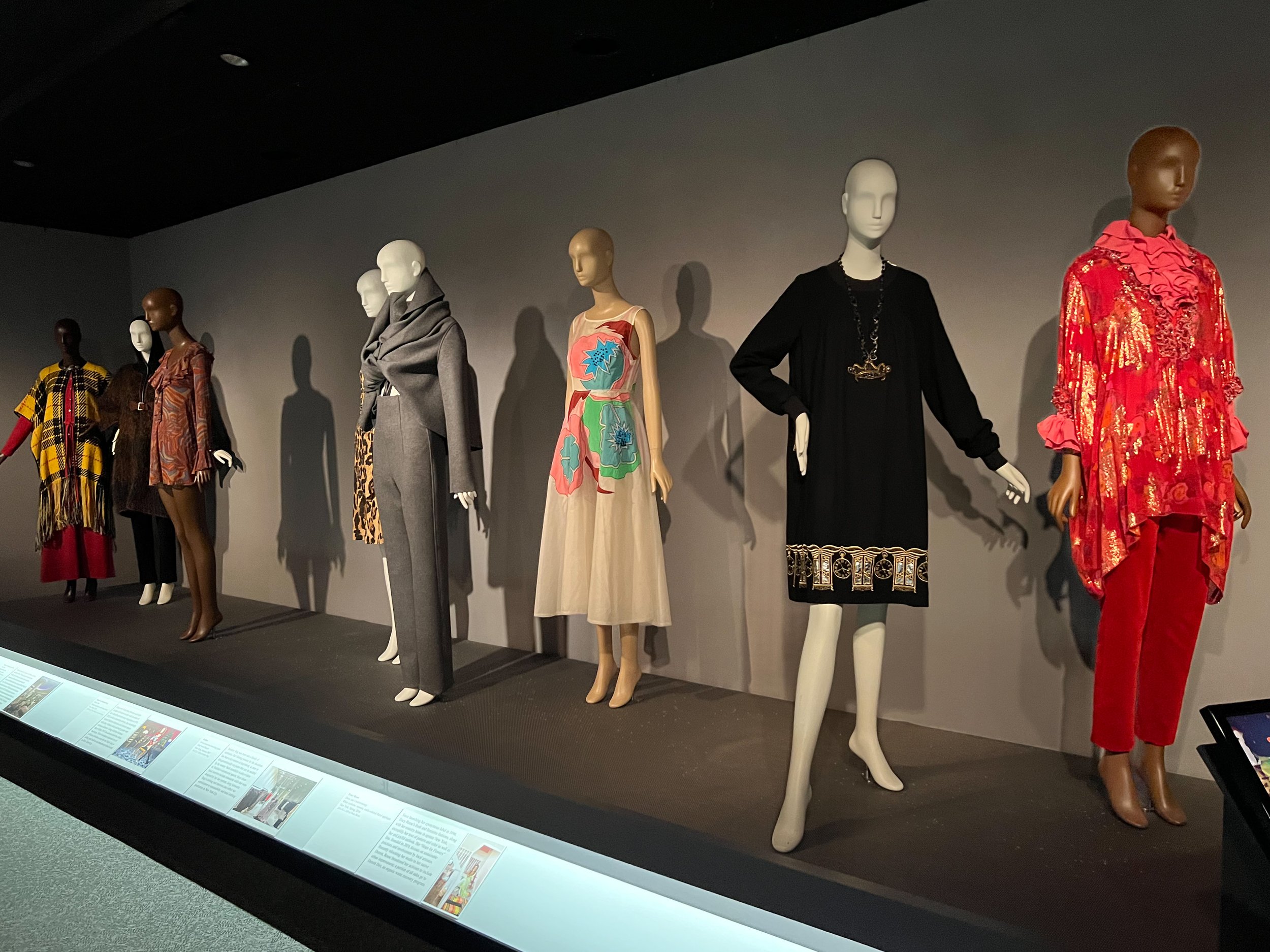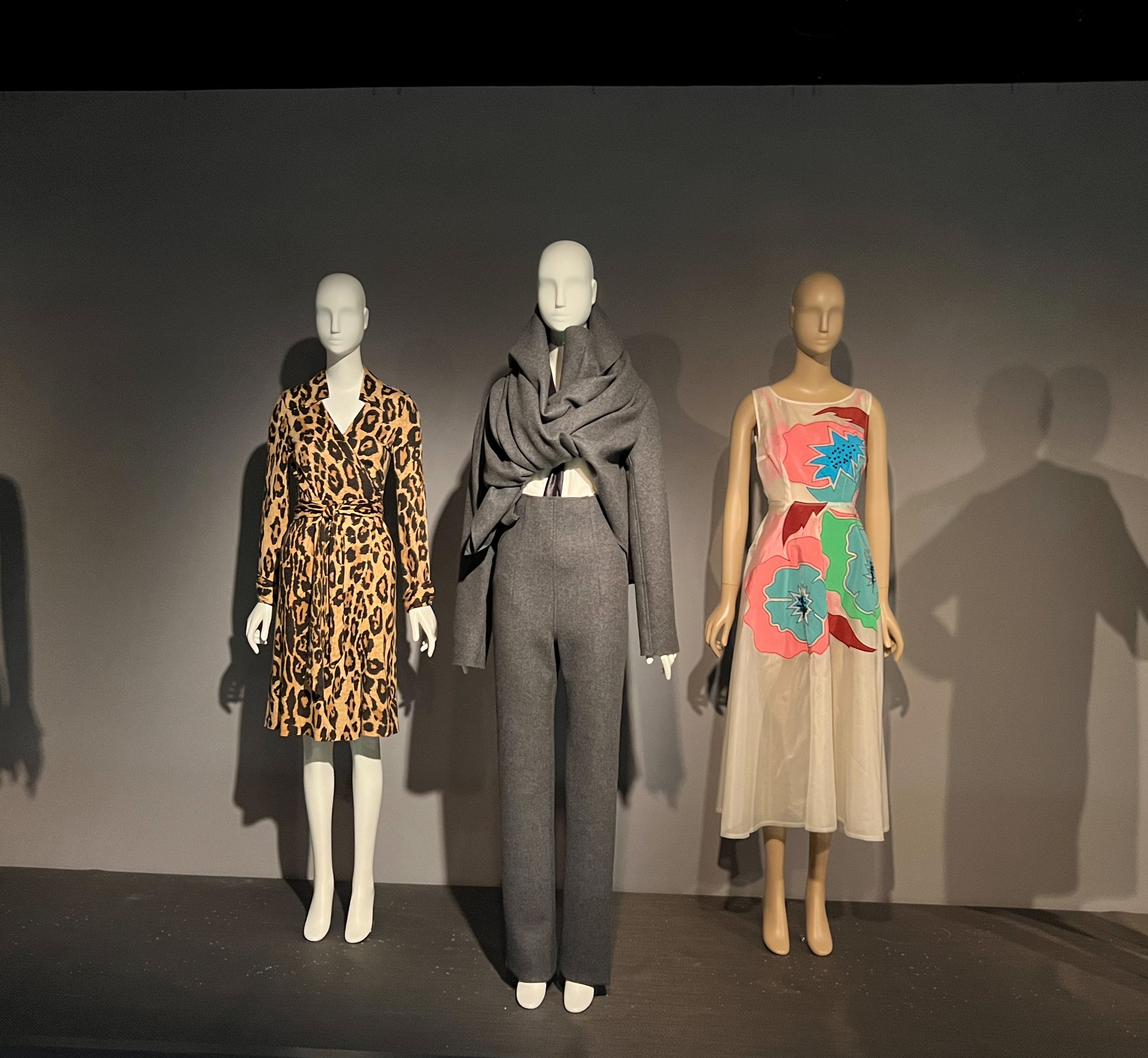Designing Women: Fashion Creators and Their Interiors
Gowns attributed to Lucile, Lady Duff Gordon; at the Museum FIT exhibit: Designing Women: Fashion Creators and their Interiors
Designing Women: Fashion Creators and Their Interiors, a recent exhibit at the Museum at FIT, explores the interconnectedness of fashion and interior design through the lens of some of the most influential female designers of the 20th century. This exhibit was the second of five fashion exhibits that I saw while in NYC last month. Recently, I wrote about the student curated, Claire McCardell exhibit.
Fashion at its essence is a form of communication. Through it, we can express our identity, ideas, and aspirations. Since fashion reflects the cultural, political, and socio-economic context of a given period, this exhibit provides an opportunity to see how fashion influenced the creative process of some extraordinary twentieth-century fashion creators. While also inspiring a profound appreciation for the artistry and environmental influences that helped to shape their careers.
Gowns attributed to Lucile, Lady Duff Gordon and the Callot Sisters at the Museum FIT exhibit: Designing Women: Fashion Creators and their Interiors
Gowns by Jeanne Pauquin, at the Museum FIT exhibit: Designing Women: Fashion Creators and their Interiors
Understanding the Influence of 20th Century Women Designers
More than just a celebration of fashion, Designing Women, is an exploration of the creative process that reveals how fashion and design are used as a canvas to express views on femininity, comfort, luxury, and even rebellion. By challenging societal norms, the bold and pioneering clothing and interiors, redefined what fashion could be. Transforming not just the way women dressed, but also the way they lived.
You can see this duality in the work of Coco Chanel, for example. An icon of sophisticated simplicity, she prioritized comfort in her designs, while pioneering a new aesthetic of elegance that placed the modern woman at its core. Her Parisian apartment, with its neutral colors, exquisite minimalism, and mix of masculine and feminine elements, echoed the same philosophy. It portrayed luxury in the realm of comfort, serving as a physical extension of her avant-garde vision for women's fashion.
Coco Chanel, and Elsa Schaiparelli (right) at the Museum FIT exhibit: Designing Women: Fashion Creators and their Interiors
Detail Chanel Black Lace Evening Dress, C. 1932
Madeleine Vionnet, Schaiparelli, and Chanel dresses,
Chanel’s work was juxtaposed with designers such as Madeleine Vionnet, Jeanne Paquin, Elizabeth Hawes, Bonnie Cashin, Anna Sui, and Elsa Schiaparelli. Schiaparelli’s home, with its whimsical and provocative elements, was such a reflection of her Surrealist leanings. Underscoring how each woman's living space and their sartorial creations are truly an extension of their fashion ethos.
Placed within the broader historical context of the twentieth century, the curator, Deputy Director, Patricia Mears has skillfully incorporated the prevailing social, cultural, and artistic movements of the time, enabling visitors to better understand the designers' motivations, inspirations, and the impact their work had on society. This historical framework serves as a valuable backdrop, enhancing our appreciation for the transformative power of design and how it shaped the spaces we live in and the clothes we wear today.
As I meandered through the gallery, I could more fully appreciate how the personal philosophies of the designers became intrinsically woven into their work, and how their interiors were both a reflection and an extension of their personal styles. Not as separate spheres of private and public, fashion and interiors, but as a single canvas of personal expression for their revolutionary ideas. With each vignette, I looked for parallels and differences, for echoes and deviations. Remembering that each of these women was not only creating beautiful clothing, but also a new paradigm for women in their time.
Exploring Fashion and Interior Design
I often encourage my fashion students to go to museums and to look beyond the visual aesthetics and to think about the cultural, social, and historical context. To engage with the exhibition not just as an observer, but as a student of history and culture. Above all, I ask them to remember, every designer leaves a bit of herself in her work. Our job is to find and understand it.
Pauline Trigère, Mary Quant, Mila Schoën, Irene Galitzine, and Halston with Elsa Peretti “Bone” cuffs and “Bottle Open Bottle” Necklace.
Mary Quant and Mila Schön
Bonnie Cashin ensembles.
Gowns by Anouska Hemple and Carolyne Roehm.
Bonnie Cashin, Barbara Hulanicki for Biba, Diane von Furstenberg, Yeohlee, Tracy Reese, Anna Sui.
Diane von Furstenberg, Yeohlee, and Tracy Reese.
How Designing Women Transformed Fashion and Interior Design
Drawn from the Museum at FIT’s permanent collection, this exhibit beautifully captures the women behind the designs, her visions, her revolutions, her impact on the world and how her work influenced other women of their time– not in a prescriptive way, but rather by giving women new avenues for self-expression and empowerment. By pushing boundaries in both fashion and interior design, these designers expanded the realm of possibilities for women. By telling the story of the woman behind the designs, her visions, her revolutions, and her impact on the world – it shows how these women, through their work, transformed the spaces we live in and the clothes we wear.
I left with a renewed understanding of the transformative power of fashion, the significance of personal spaces, and the enduring legacies of these influential women. Designing Women is not only a celebration of their accomplishments but also a testament to the ongoing dialogue between fashion, art, and the spaces in which creativity flourishes. By highlighting these intertwined narratives, the exhibit encourages viewers to think more deeply about the cultural and historical contexts that these designers navigated, thus providing a comprehensive understanding of their contributions.
/\/\/\/\/\/\/\/\/\/\/\/
Hilarie
Designing Women: Fashion Creators and Their Interiors
At the Museum at FIT, November 30, 2022- May 14, 2023

